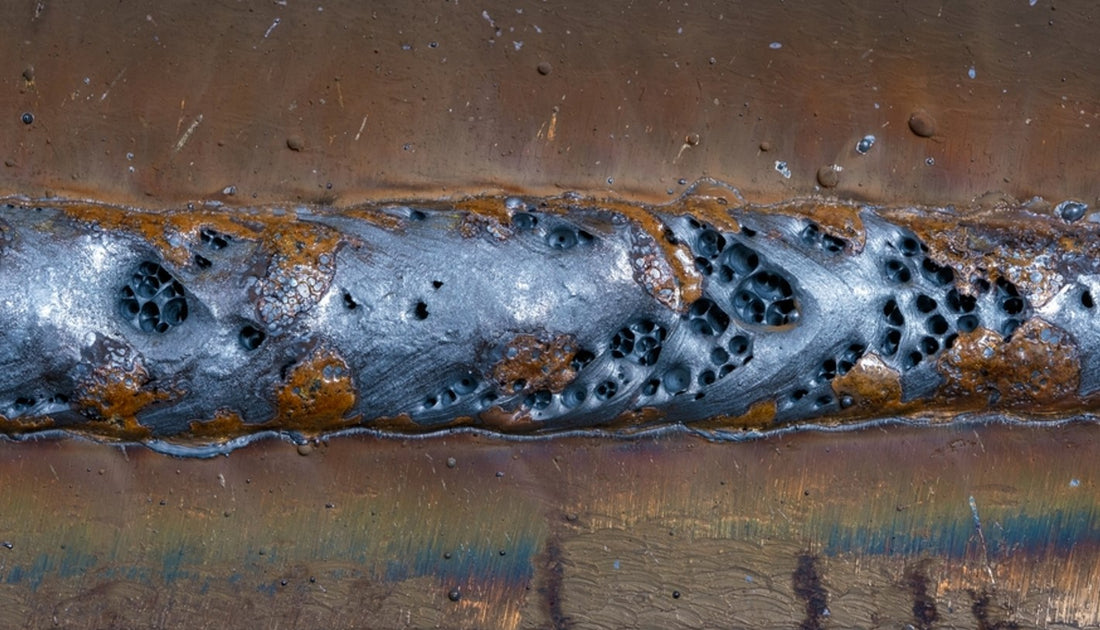Understanding Porosity in Welding: Discovering Reasons, Impacts, and Prevention Strategies
As experts in the welding industry are well aware, comprehending the causes, results, and avoidance techniques related to porosity is vital for accomplishing robust and reputable welds. By delving right into the origin triggers of porosity, analyzing its detrimental impacts on weld high quality, and exploring reliable prevention methods, welders can boost their understanding and abilities to generate high-grade welds constantly.
Common Root Causes Of Porosity
Contamination, in the type of dust, grease, or corrosion on the welding surface area, creates gas pockets when warmed, leading to porosity in the weld. Improper protecting takes place when the shielding gas, frequently used in processes like MIG and TIG welding, is not able to totally protect the molten weld swimming pool from responding with the surrounding air, resulting in gas entrapment and subsequent porosity. In addition, inadequate gas protection, often due to wrong circulation rates or nozzle positioning, can leave parts of the weld unguarded, permitting porosity to form.
Effects on Weld Top Quality
The presence of porosity in a weld can substantially endanger the total quality and integrity of the welded joint. Porosity within a weld produces spaces or dental caries that damage the structure, making it more vulnerable to splitting, rust, and mechanical failing. These spaces work as stress and anxiety concentrators, reducing the load-bearing capacity of the weld and increasing the probability of premature failing under used stress and anxiety. In addition, porosity can additionally act as possible websites for hydrogen entrapment, more aggravating the destruction of the weld's mechanical residential or commercial properties.
Moreover, porosity can prevent the performance of non-destructive screening (NDT) techniques, making it challenging to detect various other issues or discontinuities within the weld. This can cause considerable safety and security problems, particularly in vital applications where the structural honesty of the bonded components is paramount.

Prevention Techniques Overview
Offered the damaging impact of porosity on weld top quality, efficient prevention strategies are vital to preserving the structural stability of welded joints. One of the main avoidance techniques is thorough cleaning of the base materials before welding. Pollutants such as oil, oil, rust, and moisture can add to porosity, so making sure a clean work surface area is necessary. Proper storage space of welding consumables in dry conditions is additionally important to avoid dampness absorption, which can result in gas entrapment throughout welding. In addition, choosing the proper welding specifications, such as voltage, existing, and take a trip rate, can aid lessen the risk of porosity development. Ensuring appropriate securing gas flow and insurance coverage is another crucial avoidance technique, as insufficient gas protection can cause atmospheric contamination and porosity. Appropriate welder training and qualification are essential for executing precautionary actions effectively and regularly. By integrating these avoidance strategies right into welding techniques, the incident of porosity can be significantly decreased, resulting in more powerful and a lot more trusted welded joints.
Importance of Appropriate Protecting
Correct shielding in welding plays an important role in stopping climatic contamination and ensuring the stability of bonded joints. Shielding gases, such as argon, helium, or a website here blend of both, are typically used to shield the weld pool from reacting with elements in the air like oxygen and nitrogen. When these responsive components come right into call with the warm weld pool, they can trigger porosity, bring about weak welds with minimized mechanical residential properties.

Poor shielding can lead to various flaws like porosity, spatter, and oxidation, jeopardizing the structural stability of the welded joint. Sticking to correct shielding techniques is necessary to generate top notch welds with marginal problems and make sure the longevity and dependability of the welded components.
Monitoring and Control Techniques
How click here for info can welders effectively keep track of and control the welding procedure to guarantee optimum results and prevent defects like porosity? By continually monitoring these variables, welders can recognize discrepancies from the excellent problems and make instant adjustments to protect against porosity formation.

In addition, executing correct training programs for welders is necessary for keeping an eye on and controlling the welding procedure effectively. What is Porosity. Informing welders on the importance of preserving consistent criteria, such as appropriate gas securing and take a trip rate, can aid stop porosity problems. Routine evaluations and certifications can additionally make certain that welders are skillful in tracking and regulating welding processes
Additionally, using automated welding systems can improve surveillance and control capabilities. These systems can specifically manage welding specifications, minimizing the likelihood of human error and making certain regular weld quality. By integrating innovative surveillance modern technologies, training programs, and automated systems, welders can efficiently monitor and regulate the welding procedure to decrease porosity defects and achieve top quality welds.
Verdict
